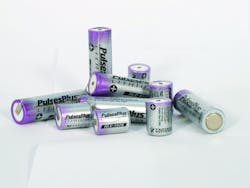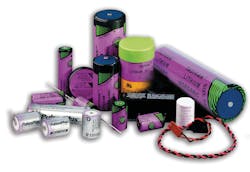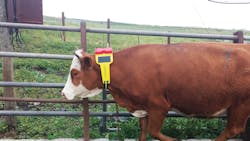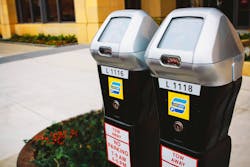Lessons Learned: Powering the First Remote Wireless Device
Low-power remote wireless devices are essential to virtually every aspect of industrial automation—from asset tracking and SCADA to environmental monitoring, artificial intelligence, and machine learning, to name a few.
Today’s industrial battery technology is rooted in the earliest IIoT application: meter transmitter units (MTUs) used in automated meter reading (AMR) for water and gas utilities. That’s why valuable lessons can be learned by following the evolution of industrial remote wireless devices.
Two types of low-power wireless devices are being utilized in IIoT applications. The vast majority of devices draw micro-amps of current and are mainly powered by industrial grade primary (non-rechargeable) lithium batteries. In addition, there are a growing number of applications that draw milli-amps of current, enough to prematurely exhaust a primary battery, typically requiring the use of an energy harvesting device in combination with an industrial grade rechargeable Lithium-ion (Li-ion) cell to store the harvested energy.
Virtually all leading brands of MTUs are powered by bobbin-type lithium thionyl chloride (LiSOCl2) chemistry, which is the preferred choice among primary (non-rechargeable) batteries.
Bobbin-type LiSOCl2 chemistry offers unique performance characteristics, including the highest capacity and energy density of any commercially available chemistry. These cells also feature the widest temperature range (-80°C to 125°C) along with the lowest annual self-discharge rate of any competing chemistry. Achieving a lower self-discharge rate translates into a lower total cost of ownership, which is especially valuable for applications involving remote locations and extreme environments.
Minimizing battery self-discharge
All batteries experience some amount of annual self-discharge, even when disconnected from an external load. Bobbin-type LiSOCl2 cells feature the lowest self-discharge rate of all, mainly by harnessing the passivation effect.
Passivation occurs when a thin film of lithium chloride (LiCl) forms on the surface of the lithium anode, thus impeding the chemical reactions that cause battery self-discharge. Whenever a load is placed on the cell, this passivation layer causes high initial resistance along with a temporary drop in voltage until the passivation layer starts to dissipate—a process that keeps repeating whenever the load is removed.
Cell passivation is also influenced by other factors, including: cell capacity; length of storage; storage temperature; and discharge temperature. Partially discharging a cell then removing the load increases the passivation effect relative to a new battery. While high levels of passivation can be beneficial to extending battery life, too much of it can be problematic if it blocks energy flow.
A battery’s self-discharge rate is further influenced by the purity of raw materials and the method by which the cell is manufactured. A superior quality bobbin-type LiSOCl2 cell loses just 0.7% of its total capacity each year due to self-discharge, enabling up to a 40-year battery life. By contrast, an inferior quality bobbin-type LiSOCl2 cell can lose up to 3% of its nominal capacity annually due to self-discharge, exhausting 30% of its nominal capacity every 10 years, reducing battery operating life to as little as 10-15 years.
The potential for 40-year battery life was validated by Aclara (formerly Hexagram), a supplier of smart infrastructure technologies to gas, water, and electric utilities. When replacing its older MTUs with newer generation technology, Aclara tested random samples of the original batteries and found that they had retained a significant amount of unused capacity even after 28+ years in the field.
The earliest MTUs were limited one-way RF wireless communications using drive-by readers. However, over time, this application has evolved to support two-way wireless connectivity utilizing local area mesh networks (mainly in municipalities) and cell phone/satellite uplinks (mainly in rural areas).
Extended battery life is increasingly essential to AMR metering, especially with the emergence of ultrasonic MTUs that contain no moving parts, thus able to last indefinitely, limited only by the life of the battery. These ultrasonic devices cost roughly twice as much as the mechanical meters they replace; so to achieve maximum economic benefit these batteries need to last up to twice as long as standard lithium batteries that have a maximum operating life of 10-15 years.
How important is extended battery life to an MTU deployment? Critically important, according to a survey conducted by the California Energy Commission. Members of the Association of California Water Agencies were surveyed and 62% of respondents indicated that meter battery life was a major concern, ranking even higher than cost (60%).
Powering an ultrasonic MTU that features practically unlimited operating life with a short-lived battery is senseless because it can result in unnecessary battery change-outs, delayed and/or inaccurate billing, reduced customer service, and the potential for lost data. The economic losses associated with a premature large-scale, system-wide battery failure can be so substantial that municipalities have chosen to preemptively replace thousands of batteries each year just to avoid potential chaos.
High pulse energy
Standard bobbin-type LiSOCl2 batteries are designed to deliver low-rate power, not generate the high pulses required for two-way wireless communications.
This challenge was solved by adding a patented hybrid layer capacitor (HLC). The standard bobbin-type LiSOCl2 cell delivers low daily background current, while the HLC delivers periodic high pulses to power wireless communications. In addition, the HLC features a unique end-of-life voltage plateau that can be interpreted to deliver low battery status alerts, giving utility maintenance crews ample time to schedule battery replacements.
A growing number of low-power industrial applications consume current measurable in milli-amps, requiring the use of an energy harvesting device in combination with an industrial grade rechargeable Lithium-ion (Li-ion) battery.
The most proven form of energy harvesting is the photovoltaic (PV) panel. However, certain niche applications harvest energy from other sources such as equipment movement, vibration, temperature variances, and ambient RF/EM signals.
One prime example involves the use of small solar PV panels in combination with industrial grade Li-ion batteries to track the health and status of animal herds. Solar/Li-ion hybrid systems are also used to actuate mechanical devices and provide low-cost power to off-grid locations. For example, these rechargeable cells power parking meter fee collection systems that incorporate AI-enabled sensors to identify open parking spots.
Consumer-grade rechargeable Li-ion cells have a maximum operating life of 5 years and 500 recharge cycles, with a moderate temperature range (0-40°C), and no ability to deliver high pulses. By contrast, industrial grade Li-ion batteries can operate for up to 20 years and 5,000 full recharge cycles, with an expanded temperature range (-40° to 85°C), and the ability to deliver high pulses to power two-way wireless communications.
Extended-life lithium batteries reduce the total cost of ownership, which is especially important if your battery needs to last as long as your device. Therefore, it pays to conduct thorough due diligence by requesting well-documented long-term test results, in-field performance data under similar conditions, and numerous customer references.
About the Author
Sol Jacobs
Vice President and General Manager

Leaders relevant to this article:



